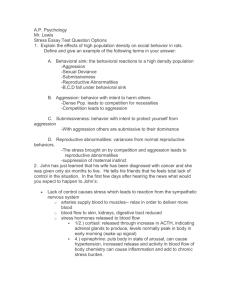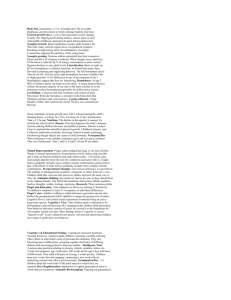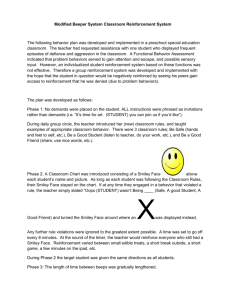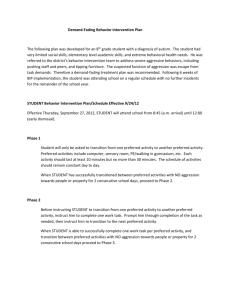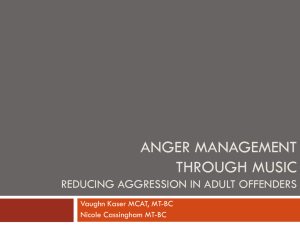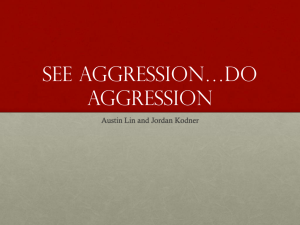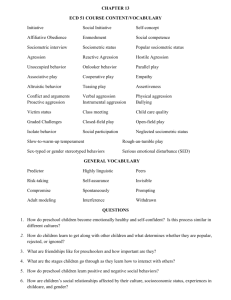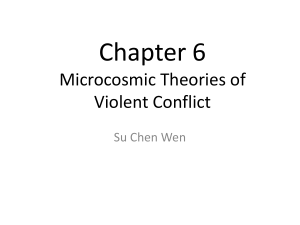"U.S. Aggression and Intervention" by Rey Casambre
advertisement
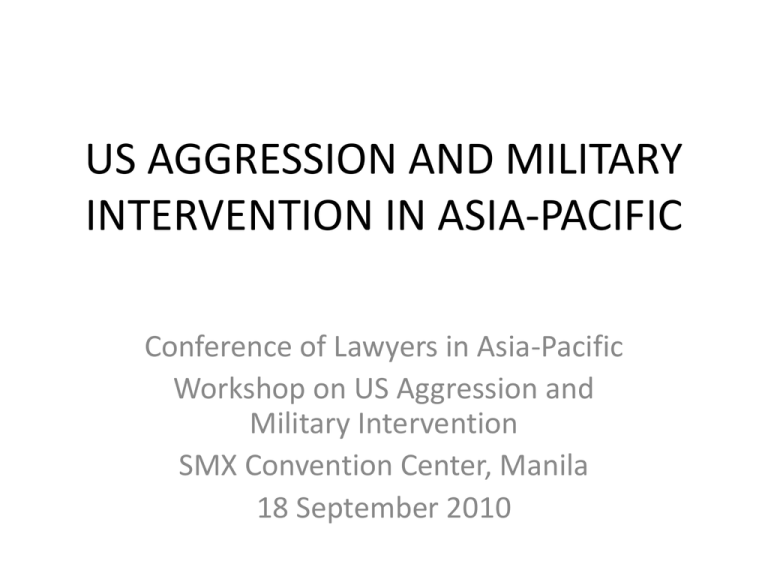
US AGGRESSION AND MILITARY INTERVENTION IN ASIA-PACIFIC Conference of Lawyers in Asia-Pacific Workshop on US Aggression and Military Intervention SMX Convention Center, Manila 18 September 2010 A century of aggression and intervention • The 20th century was the bloodiest and most violent in the history of mankind; much of the blood is in the hands of US imperialism • US aggression and military intervention in Asia-Pacific began at the turn of the 20th century, along with the rise of modern imperialism. • The US emerged from the 2nd World War as the mightiest and most prosperous industrial power, and thereafter used its military superiority to engage in aggression and intervention to preserve its supremacy and expand and consolidate its global hegemony. • The Cold War was a handy excuse for the US to maintain its forces and conduct a host of military activities in the region until the 1980s. • With the collapse of the USSR and East European regimes in 1990-91, the US needed another pretext for sustaining its aggression and military intervention all over the world. • The 9/11 attacks on the US became a new and effective pretext for the US to seize and control strategic resources, prevent the rise of a peer rival, expand and consolidate its global hegemony , and ensure its preeminent position as sole superpower. • It employed the combination of deception and force, with coercion and force as the main and decisive instrument. US PACIFIC COMMAND – Symbol of US presence and interest in Asia-Pacific US PACIFIC COMMAND • (covers) 36 nations encompassing about half of the earth's surface • home to more than 50% of the world's population (East Asia- 33%) • world's six largest armed forces (China, US, Russia, India, North Korea, South Korea) • Source of about 1/3 of US trade • World's three largest economies (US, China, Japan) • Five nations allied with the US through mutual defense treaties (Australia, Japan, Philippines, South Korea, Japan) • US PACOM has 325,000 troops, 1/5 of the total US armed forces; of which 100,000 are based in Japan and Korea alone. • occupying and having US military bases in Afghanistan would tighten US control over the region flanking China to the west. The military plans for invasion and occupation were complete long before 9/11. The US special forces and other troops used in the invasion had been training for years in the nearby Central Asian republics to familiarize with the terrain. From Rand Corporation study “The United States and Asia” Chap 4- Implications for the military and USAF: Challenges and Change “You have a Maoist insurgency that’s trying to overthrow the government, and this really is the kind of thing that we are fighting against throughout the world.” • Obama campaigned –and won the Presidency – largely on a promise of reversing the Bush policies of pursuing a “dumb war”, as well as allowing the bankers to screw the economy. Obama had since reversed not Bush’ policies and thrusts in relation to the War on Terror, nor on the US and global economy. Obama’s subsequent actions are a reverse of his own word and his promises. • The Obama regime has of late attempted to give a new and more benign face to its wars of aggression by ‘civilianizing” it and stressing the “primacy of non-military means”, even avoiding the use of the phrase “war against terrorism” and preferring to use “war of counter-insurgency” instead. • But on the ground, the reality is that coercion and force, not deception, are the main instruments for suppressing resistance and protext, and for perpetuating the status quo. Impact on Human Rights and Conflict • From the beginning, the intolerable hardships and suffering inflicted on the people by the plunder of their economies and by wars of aggression and intervention have pushed more and more people to protest and fight for freedom and their rights. • The more the people perceive the truth about the root causes of their misery and hardships and find that strength is gained through collective action, the more that deception fails and force is increasingly resorted to by those who wish to retain the status quo.


